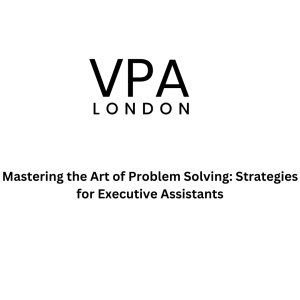Mastering the Art of Problem Solving: Strategies for Executive AssistantsPosted by Thomas Kakin on June 8th, 2023  As an executive assistant, you play a vital role in supporting the success of your organization. One of the key skills that sets exceptional executive assistants apart is their ability to effectively solve problems. Whether it's a scheduling conflict, a logistical challenge, or a complex issue requiring strategic thinking, your problem-solving skills can make a significant impact on the efficiency and effectiveness of your work. In this article, we will explore strategies to help executive assistants master the art of problem solving.
To enhance your problem-solving skills as an executive assistant, consider professional development opportunities and training programs. Visit Executive Assistant for resources and information on executive assistant roles in London. In conclusion, mastering the art of problem solving is crucial for executive assistants. By following these strategies and approaches, you can become a skilled problem solver and contribute to the success of your organization. Remember to analyze the situation, define the problem, generate ideas, evaluate options, develop an action plan, communicate and collaborate, implement and monitor, and learn from the experience. With practice and continuous improvement, you will excel in solving complex challenges and making a significant impact in your role as an executive assistant. Like it? Share it!More by this author |


